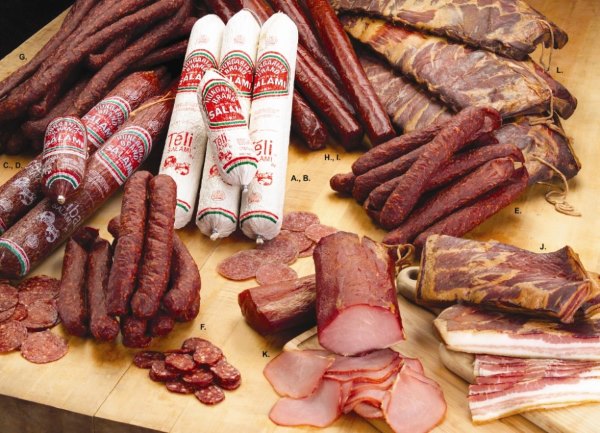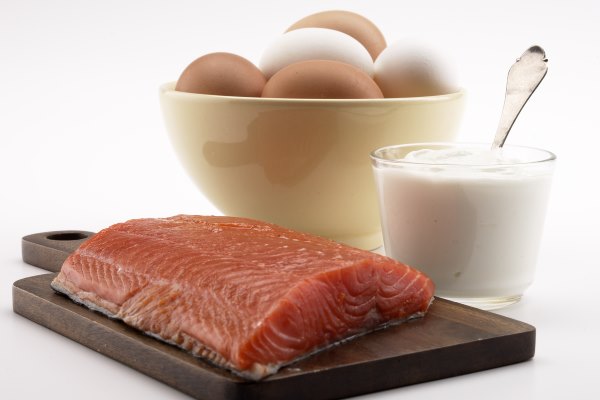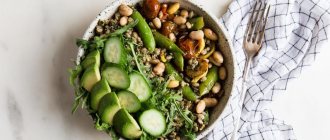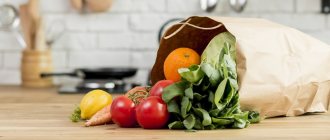general information
Proteins are found in both animal and plant foods. However, their value is not equal. As is known, among the amino acids supplied with protein foods, there are:
- replaceable , capable of being synthesized in the digestive tract;
- conditionally replaceable , which are produced only under certain conditions;
- irreplaceable , which the body can receive exclusively from the outside.
High protein animal products contain all essential amino acids in high concentrations. Plant foods are poorer in this regard; their amino acid composition may be incomplete, or the content of some essential amino acids may be insufficient.
Does this mean that protein needs should be met exclusively through animal foods? No, nutritionists recommend including both types of protein foods in your diet, and vegetable protein should account for at least half of the daily value.
Plant protein foods are essential in the diet because:
- In addition to protein, most animal products also contain saturated fats, which are harmful to blood vessels, the consumption of which should be limited.
- Plant foods rich in protein also contain carbohydrates, the content of which in the daily diet should be 3-4 times higher than proteins.
- In addition to proteins, many plant-based foods contain unsaturated fats, which are beneficial for the cardiovascular system.
- Most plant foods also contain fiber, which is necessary for normal intestinal function. Without its supply, constipation occurs and the body is poisoned by protein breakdown products.
Therefore, plant-based foods rich in protein must be present in the diet. Moreover, there is another important reason for their use.
Almost every product contains harmful substances in addition to beneficial substances. This is due to the unfavorable environmental situation, as well as to technologies for growing agricultural plants and animals. Harmful substances (pesticides from plants, hormones and antibiotics from meat foods, mercury and other pollution from the world's oceans from fish, etc.) gradually accumulate in the body, which can lead to the development of serious diseases. In order not to exceed the permissible levels of various harmful substances, it is necessary to eat as varied as possible.
If you give preference to 2-3 types of protein foods, eating the same thing every day, then there is a high risk of getting negative side effects from the toxic compounds they contain. The more different high-protein foods you have in your diet, the healthier your diet will be.
We bring to your attention the top protein products that must be present in an athlete’s diet.
Where are proteins found?
Recent studies have proven that not only the amount of protein is important for muscle formation, but also the source of it. We all know that proteins are nutrients that are responsible for building muscles and losing weight, helping to normalize hormonal levels, and they are found in both plant and animal products.
You can get this component from dairy products, eggs, meat, beans and some vegetables. But plant proteins are not as rich in amino acids as animal proteins. Animals, on the contrary, contain all 9 vital amino acids. That is why it is important to create a complete and correct diet, using different products.
Vegetarians do not eat meat, and vegans do not even consume dairy products and eggs; it is more difficult for them to find sources of protein. But even for such people, you can combine a diet from different plant foods to get more amino acids.
Red meat
Red meat is usually called the muscle tissue of mammals: beef, pork, lamb, rabbit, horse meat, etc.
Meat proteins are very valuable in composition; they contain all the essential amino acids in large quantities. In addition, unlike many other sources of protein, meat contains a significant amount of vitamins A, D, group B, and important microelements: iron, magnesium, zinc. Deficiency of vitamin B12, iron, and zinc is often observed in vegetarians, and this is due precisely to their refusal to eat meat. Connective tissues are very beneficial for joints. Orthopedists recommend that their patients include beef and pork shank aspic and dishes with gelatin in their menu more often.
The protein content of meat ranges from 16 g/100 g to 21 g/100 g. It could be called an ideal source of animal proteins, but there are reasons why its consumption should be limited:
- Red meat contains large amounts of saturated fat, which is harmful to the cardiovascular system. Even if pork or beef does not look fatty, it still contains a significant amount of saturated fat. Especially if there are layers of fat. Beef fat is the most harmful, it is the most refractory, its melting point is 50 ° C, which is 13 ° C higher than the temperature of the human body. So marbled beef, prized by gourmets, cannot be called healthy. Pork fat, contrary to popular belief, is less refractory and harmful; in small quantities it is even beneficial. The least amount of saturated fat is found in lean veal, fat-free rabbit and lamb.
- Consuming large amounts of meat increases the acidity of the body's internal environment. A shift in the acid-base balance to the acidic side is very harmful, it contributes to the development of serious diseases and shortens life expectancy.
- Meat contains many purines, which are converted into uric acid. This leads to overload of the kidneys, as well as to the deposition of uric acid salts in the joints, which causes a common disease among elderly meat-eaters - gout.
- Fried meat, especially its charred parts, contains carcinogens - substances that provoke the development of cancer. The same applies to smoked products. Therefore, it is recommended to stew, boil, bake it.
- The breakdown and assimilation of meat food requires significant time and energy consumption, so it cannot be eaten in large quantities. An eaten portion weighing more than 150 g of meat does not have time to be absorbed in the small intestine and enters the large intestine. The large intestine is the kingdom of bacteria; under their influence, the remains of meat food begin to rot, releasing toxins and poisoning the body.
Considering all of the above, we can conclude that red meat should not be the main supplier of protein in the diet. But you shouldn’t completely abandon it. It is recommended to consume it no more than 2 times a week, 100-150 g at a time, giving preference to low-fat varieties. When preparing, it is advisable not to use frying or smoking. The best side dish for meat is vegetables and herbs; the fiber they contain neutralizes many of the negative effects of eating meat dishes.
Protein: its features, benefits for the body
Scientists have proven that the basis of life on Earth is protein . The cells of all living organisms consist of it, and this also applies to humans. Protein is found in all tissues and organs: bones, muscles, skin, hair, etc.
He takes part in the following processes:
- skin regeneration;
- synthesis of various enzymes;
- creation of hemoglobin;
- transportation of lipids, mineral salts, vitamins, medications;
- absorption of fats, etc.
Slow and fast proteins (the list of products in which they are contained is in this article) is the basis of life on Earth.
In turn, protein consists of 20 amino acids , linked together sequentially by chemical bonds, formed in a certain order and performing various functions. Each plays a designated role, there are only two of them:
- Formation of acidic properties of molecules.
- Strengthening, transferring the fundamental properties of compounds.
Experts recommend, in parallel with protein consumption, to monitor the level of B vitamins. If, for example, a diet with an increased amount of protein products is used to lose weight, then the body’s need for vitamin B also increases, because its role is to help the body metabolize proteins.

Smoked meats and sausages, despite their high protein content, are actually absolutely not beneficial for the body
However, in addition to benefits, protein can also cause harm. A number of studies confirm that foods with a high content of the substance affect the development of chronic diseases and food allergies . This applies to red meat, especially in the form of sausages, sausages, and smoked meats.
Such foods in large quantities increase the risk of cardiovascular diseases. Foods with dietary protein - fish, poultry and legumes, on the contrary, are good for the heart.
Poultry meat
Meat from chickens, turkeys, geese, and ducks are also protein-rich foods. This is an excellent source of easily digestible proteins; 100 g of the product contains 18-20 g. In terms of amino acid composition, it is not inferior to red meat, but in terms of the content of vitamins and microelements, poultry meat is poorer. It can be included in the menu of athletes and bodybuilders every day, but with some reservations:
- In poultry factories, when raising broilers, antibiotics and all kinds of growth stimulants are used, among which there may be substances identical to female sex hormones. Therefore, you should not get carried away with chicken from supermarkets. It is better to give preference to poultry from personal plots.
- Poultry adipose tissue contains both saturated and unsaturated fats. They are mainly concentrated in the skin. Traces of drugs used in raising poultry also accumulate there. Therefore, it is recommended to remove the skin from the carcass. Chicken and turkey fillets have the least fat; these parts of the carcass are considered dietary. If the bird is not too fatty and is raised on natural feed, then sometimes you can boil it with the skin, then removing the fat from the broth, since the skin contains connective tissue that is beneficial for joints.
Like meat, poultry is not recommended to be eaten in large portions; more than 150 g at one time should not be consumed.
You may also find tables of high protein foods helpful.
Table of foods containing protein (in grams)
| Food | Amount of proteins per 100g | |
| Meat and poultry (animal proteins) | ||
| Chicken (breast) | 23,09 | |
| Chicken (drumstick) | 26,8 | |
| Veal | 19,7 | |
| Pork | 11,4-16,4 | |
| Beef liver | 17,4 | |
| Chicken liver | 20,4 | |
| Egg | 12.7 (6-7g per 1 piece) | |
| Fish and seafood (animal proteins) | ||
| Salmon | 20,8 | |
| Trout | 22 | |
| Pollock | 15,9 | |
| Halibut | 18,9 | |
| Cod | 17,5 | |
| Tuna | 22,7 | |
| Herring | 18 | |
| Squid | 18 | |
| Crab | 16 | |
| Shrimp | 18 | |
| Products containing milk protein (animal proteins) | ||
| milk 0.5% | 2 | |
| milk 3.2% | 2,8 | |
| cheese 17% fat | 29 | |
| cheese 45% fat | 25 | |
| cottage cheese 0% (dry in a pack) | 18 | |
| Legumes (vegetable proteins) | ||
| Peas | 23 | |
| Chickpeas | 20,1 | |
| Beans | 22,3 | |
| Lentils | 24,8 | |
| Nuts and seeds (vegetable proteins) | ||
| Hazelnut | 16,1 | |
| Almond | 18,6 | |
| Walnut | 13,8 | |
| Peanut | 26,3 | |
| sunflower seed | 20,7 | |
| Sports nutrition | ||
| Whey Protein | 60-95 | |
| Casein protein | 70 | |
| BCAA | 95-100 | |
The table shows foods with the highest protein content. If you are planning a menu, also use the Table of fat/carbohydrate and calorie content in foods.
Fish
Fish is another protein-rich food. Depending on the type of fish, the protein content in it is 18-24 g for every 100 g. Fish proteins are easily digestible and contain all the essential amino acids. Fish also contains a lot of minerals: phosphorus, iodine, copper. Fish bones contain a large amount of phosphorus, so canned food is useful, in which the bones are softened and can be eaten. Fatty sea fish is especially valued due to the content of such useful substances as omega-3 fatty acids and fat-soluble vitamins A, E, D.
Fish and seafood have traditionally served as the main source of animal protein for residents of sea coasts and, as a rule, the average life expectancy in such regions is higher than where meat is preferred.
However, such a healthy product as fish cannot be consumed in large quantities. Fatty fish should not be eaten more than twice a week, because... Even healthy fats should be consumed in moderation. Another reason for the restriction is due to the fact that fish can accumulate harmful substances used when growing in fish farms, as well as from polluted waters of the world’s oceans.
Shellfish
Clams, crabs, mussels and oysters are all seafood worth adding to your diet.
Although shellfish are low in Omega-3s compared to salmon and cod, they are a valuable source of fatty acids. Shellfish are also rich in zinc, vitamins A, B1, B2, B3, D, iron, magnesium, calcium and other minerals.
One Pacific oyster contains 4.7 g of protein and 41 kcal. A small cooked clam contains 2.4 g of protein and only 14 kcal. One 85 g serving of crab contains 15.5 g of protein and only 71 kcal.
Tip #1. Avoid processed cocktail sauces with sugar. Instead, serve the clams with lemon pesto or Tabasco.
Tip #2. Combine 250-300g cooked crab, one large egg, 1/8 cup almond flour, chopped onion, red bell pepper hot sauce and mayonnaise to taste. Form the cupcakes and bake them until golden brown.
Tip #3. Toss diced clams with spinach. Add mushrooms, chopped tomato, oil and vinegar.
Tip #4. Crab sticks with garlic sauce. Bingo! Protein, proper nutrition and healthy fats.
Tip #5. Mix cooked crab meat with rice, add onion, garlic, salt, chopped boiled eggs, cucumber and lime juice.
Cottage cheese
Cottage cheese is considered one of the best sources of protein. The protein content in cottage cheese ranges from 16 g/100 g in a product with a fat content of 11% to 22 g/100 g in a low-fat product. Cottage cheese is also valuable for its high calcium content. Milk fat in large quantities is harmful to blood vessels, so it is recommended to choose cottage cheese with a low content.
To reduce costs, manufacturers often add soy protein and palm fat to cottage cheese, which are also not healthy. Therefore, you should look for places that sell a pure product, free of herbal additives.
Protein Sources for Vegans
Vegetarians and vegans do not eat meat, and many of them have also given up dairy products. The following products are suitable for such people:
Lentils are a high protein product. Usually well accepted by the body, but may cause heartburn.
Peas, soybeans, as an alternative to meat, beans - all are a valuable storehouse of proteins and healthy amino acids. These products are safe, they do not cause allergies or heaviness in the stomach, and will provide the body with sufficient carbohydrates and fats.
The seeds are also a good source of protein. But you need to be careful with them, such products are very high in calories and can lead to unwanted fat deposits, although they are healthy in small quantities. And for those who have digestive problems and foods with protein are poorly digested, edible hemp seeds are suitable.
Nuts are another tasty and healthy food that is high in protein. Nuts are very high in calories; 100 g of almonds contains 540 kcal, and cashews contain more than 600 kcal. They can be consumed no more than 20 grams per day, but the product is good for mental activity, heart, blood vessels, and even reduces the risk of premature death. The main thing is not to overuse it; even healthy nuts can easily make you gain weight.
How and what kind of proteins to eat if you want to lose weight
The basis of the human body is water and proteins. The latter, in addition to their “construction” function, serve to prevent aging, and they also “feed” those muscles that help burn calories.
Those who want to lose weight need low-fat protein products , since the less fat they contain, the more protein. Especially with a moderate amount of protein food, the craving for sweets, which leads to weight gain, is dulled.
Also, when losing weight, protein is necessary so that the skin suffers less.

A striking example of “fast” proteins are kefir, eggs, sea fish
Quick proteins (list of products attached) are best suited for this purpose:
- low-fat dairy products – kefir 1%, classic unsweetened yogurt;
- fish – hake, limonella, pollock;
- eggs (boiled);
- poultry - chicken.
Other types of meat should be consumed no more than 2 times a week. However, there are some advocates of the "superload" diet who believe that adding extra protein to your body can also be beneficial.
To prevent negative consequences, you should drink enough water and eat more fiber - slow-acting proteins, list of products:
- vegetables – beets, pumpkin;
- fruits – apple, pear;
- porridge – buckwheat, oatmeal, corn.
Having decided on nutrition, those who want to lose weight are recommended to consume protein in moderation, somewhere around 1–1.2 g per kilogram of weight, which is considered the ideal daily norm for a person. Therefore, it is necessary to consume 60–70 g of protein per day. But in one meal, for example, breakfast, 35 g is absorbed, no more.

Buckwheat porridge is a representative of the “slow” protein - rich in fiber
How and what kind of proteins to use for muscle growth
Proteins form the muscle frame. Therefore, protein food is so necessary for professional athletes or those who constantly experience physical activity, which contributes to the rapid breakdown of muscle tissue structure.
When consuming proteins for muscle growth, you need to consider 2 points:
- Firstly, professionals in the field of sports and proper nutrition advise breaking up meals into small portions and eating more often, about 6 times a day, without saturating the stomach.
And if there is a feeling of heaviness and there is a suspicion of incomplete absorption of protein, then along with food you can take special nutritional supplements with enzymes that will allow you to naturally digest the protein.

For muscle growth, it is important to combine plant proteins (nuts, legumes) with animal proteins
- Secondly, the main food should be plant proteins: mushrooms, legumes, nuts in combination with animals - this is any kind of meat, fish and all kinds of dairy products.
Additionally, it is allowed to use artificial protein, which can be purchased at sports nutrition stores.
Despite the goals of protein consumption, we must never forget that only a combination of plant and animal foods, as well as compliance with calorie standards, will allow a person to stay healthy and achieve the desired result: lose weight or gain muscle mass.
Take care of yourself and be healthy!
Don't miss the most popular articles in the section:
What is protein, why and when is it needed, what is the difference between slow and fast proteins, a list of foods that contain them - about all this in the video below:
What foods are rich in proteins - watch the following video:
1 COMMENT
Kefir is generally very useful. In Turkey, by the way, they prepare a fermented milk drink, ayran (similar to our yogurt, only salted) with herbs - tasty, nutritious and healthy.
Protein compatibility
However, without the goal of building muscle, you should not combine high-protein foods very often. To process proteins from different sources, gastric juice of different acidity and different enzymes are needed. A constant combination of proteins + proteins will lead to some problems with the gastrointestinal tract, for example, the process of breaking down starch may be disrupted.
A combination of proteins and carbohydrates is not the best option, since the digestion of carbohydrates occurs in an alkaline environment, and proteins in an acidic environment with a high pH. Mixing these two substances leads to fermentation of foods, heartburn, heaviness and general malaise.
It is best to combine proteins with vegetables that contain little starch, as this also inhibits the digestion of food. These are vegetables like
- Cabbage;
- Radish;
- Bell pepper;
- Celery;
- Zucchini;
- Tomatoes;
- Spinach and other salads.
Thus, if necessary, you can occasionally correct the lack of protein with a combination of two or more high-protein foods, but in ordinary life it is better to replace such a combination with protein + fiber, that is, non-starchy vegetables.
TOP best high protein foods
What foods are rich in protein? The list is quite extensive and includes:
- meat, poultry, fish;
- dairy products;
- eggs;
- seeds, nuts;
- legumes;
- vegetables fruits.
From the listed representatives of protein foods, you can create a complete diet rich in vitamins and minerals. Let's take a closer look at the healthiest protein foods.
Protein-rich eggs and dairy products
Eggs and dairy products supply the human body with useful microelements, in particular calcium, and help improve digestion and intestinal function. The only people who need to be careful are people with individual lactose intolerance. But for them there is a separate line of lactose-free products.
Swiss cheese
Swiss cheese contains 25 grams of protein per 100 grams of product. In addition, it contains micro- and macroelements that are beneficial for the immune system, kidney and liver function.
It can be added to salads or hot dishes, made toast with the addition of lettuce and vegetables.
Cottage cheese
Cottage cheese contains 15 grams of protein per 100 grams of product. It is low in calories. In addition to protein, it contains a large amount of calcium, which is beneficial for bones.
Cottage cheese goes well with honey, fruits, berries, and dried fruits. It is ideal as a breakfast or first snack.
Egg whites
Eggs, namely whites, contain 12 grams of protein per 100 grams of product. They contain virtually no fat or cholesterol, which are dangerous for the cardiovascular system.
Eggs are an excellent option for a filling, healthy, proper breakfast. This meal will provide the body with energy and essential amino acids.
Tofu cheese
Tofu contains 9.9 grams of protein. It is often used as an alternative to meat products and is widely used in Indian cuisine. Tofu is rich in micro- and macroelements, in particular magnesium and iron, useful for the functioning of all body systems.
Cheese can be used to make toast, sandwiches, cold and warm snacks, and salads.
Greek yogurt
Greek yogurt contains 6.5 grams of protein. It is also rich in calcium and vitamin B12, which are essential for normal brain function, increased performance and concentration.
Greek yogurt can be used as an independent dish with fruits, berries or as a salad dressing, as it goes well with vegetables and seafood.
Soy milk
Soy milk is an ideal product for people with lactose intolerance. It contains 4 grams of protein per 100 ml of product.
Soy milk is often the basis of nutrition for vegetarians; it can be used to prepare porridges, add to protein shakes and smoothies.
High protein meat
Meat is the main source of protein, which is able to fully replenish the body’s need for essential amino acids necessary for the functioning of many systems. Let's take a closer look at the list of the most useful products.
Ground beef or chop
There are 21 grams of protein per 100 grams of beef, minced meat or chops. The amino acids included in the composition help normalize blood pressure, reduce the level of “bad” cholesterol, and also participate in the construction of muscle mass. It is enough to consume only two small cutlets, about 120-130 grams, to fill the daily requirement by half.
Pork chops
Pork contains, in addition to amino acids, a sufficient amount of zinc and other micro- and macroelements involved in many life processes. Regular consumption of lean, lean pork helps strengthen the immune system and enhance protective reactions. And per 100 grams of product there are 18 g of protein.
Turkey breasts
Turkey meat is considered the standard in the world of nutrition. It contains practically no fat, has low calorie content, and a sufficient amount of protein - 20 g per 100 grams of product. The meat can be boiled, stewed or baked with vegetables, or used to make homemade cutlets and meatballs. It is also recommended for infants as their first complementary food.
Chicken breast
Chicken fillet is a record holder for protein content, almost 24 g per 100 grams of product. It most often becomes the basis of a dietary menu, since it is accessible and inexpensive in comparison with other types of meat.
Chicken fillet goes well with vegetables and cereals, and can be used for soups, cold and hot appetizers, and main courses.
Seafood is a protein-rich food
Seafood is a very healthy food for the body, rich in essential amino acids, B vitamins, micro- and macroelements for the functioning of the thyroid gland, adrenal glands and gastrointestinal tract. Let's take a closer look at the most protein-rich foods.
Halibut
Halibut contains an impressive amount of Omega-3 poly-saturated fatty acids, which are actively involved in many processes occurring in the body, fighting cardiovascular diseases and high cholesterol levels. Contains 19 grams of protein per 100 grams of product
Sardines
Sardines contain 19 grams of protein per 100 grams of product, which is. At the same time, they are rich in omega-3 acids, selenium and iodine, which are necessary for the functioning of the nervous, cardiovascular systems, and brain. It is recommended to add to the diet of schoolchildren and mental workers.
Anchovies
Anchovies contain almost 30 grams of protein, which is. They are also rich in magnesium, calcium, phosphorus - essential elements in the construction of bone tissue.
Anchovies improve the condition of blood vessels, tone and strengthen them, which significantly reduces the risk of plaques and blood clots.
Octopus
Octopus is a rather exotic dish for Russians. It is difficult to find on store shelves, but it is recommended to periodically include it in the diet: the microelements contained in it act as antioxidants and reduce the number of free radicals.
There are almost 19 grams of protein per 100 grams of product. Octopus contains quite a lot of cholesterol, so the serving size should be small.
Yellow tuna
Tuna contains 23 grams of protein. At the same time, it is rich in vitamin E, which has a beneficial effect on the nervous system and brain function, increasing efficiency and concentration. It is very low in calories, making yellow tuna an ideal option for the menu.
tilapia
There are almost 20 grams of protein per 100 grams of tilapia. It is also a good source of calcium, which is good for healthy bones, teeth, nails and hair.
Fish goes well with various vegetables, side dishes of cereals, it can be baked in the oven or stewed in a saucepan.
Salmon
Salmon is a real storehouse of nutrients. It has a beneficial effect on all body systems: reduces inflammation, improves the functioning of the nervous and cardiovascular systems, and strengthens the immune system. There are 20 grams of protein per 100 grams of product. But you should know that salmon contains quite a lot of fat, so it is recommended to consume small portions - up to 150 grams.
High Protein Seeds and Nuts
Seeds and nuts contain the most protein from plant foods. They are rich in vitamins, nutrients, micro- and macroelements, which have a positive effect on the body as a whole.
Pistachios
Pistachios contain 20 grams of protein, which is about the same as fish and meat. In addition, they are rich in fiber, which improves digestion, peristalsis, and an antioxidant complex.
Quinoa seeds
Quinoa seeds contain almost 15 grams of protein per 100 grams of product, which is approximately. They are also rich in microelements, which have a powerful anti-inflammatory effect and reduce the risk of cancer.
Walnuts
Walnuts contain 15 grams of protein per 100 grams of product. They are rich in copper, which helps strengthen bones and improve brain function.
Walnuts can be added to yogurt, fruits, cereals, and dietary baked goods.
Cashew
Cashew nuts contain 22 grams of protein grams of protein per 100 grams of product. They are rich in copper and iron, which help improve blood composition, strengthen the walls of blood vessels, and immunity.
High Protein Grains and Legumes
Soya beans
Of all legumes, soybeans hold the record for protein content: 26 grams per 100 grams of product. In addition, they contain a full set of essential amino acids, prevent cardiovascular diseases, and improve digestion.
Dal (lentils)
Lentils are rich in plant fiber, folic acid, and calcium, which have a beneficial effect on the functioning of the heart, strengthen the walls of blood vessels, and improve the composition and quality of blood. Regular consumption of lentils helps reduce tiredness and fatigue. There are 19 grams of protein per 100 grams of product.
Rajma (red beans)
Red beans contain vitamin B1, which improves memory, prevents Alzheimer's disease, and also helps remove toxins from the body. 100 grams of product contain 21 grams of protein.
Red beans can be added to soups, salads, cooked yourself, or used canned.
Cereals
Oatmeal contains 12 grams of protein - the body's daily requirement. Oats are also rich in dietary fiber, which improves the functioning of the gastrointestinal tract.
You can cook porridge from the flakes, add them to muesli or smoothies.
High protein fruits and vegetables
Vegetables and fruits contain less protein compared to meat, fish and legumes, but they are very beneficial for the body because they contain dietary plant fiber and a rich vitamin and mineral complex.
Broccoli
Broccoli contains only 3 grams of protein per 100 grams of product, but it is rich in soluble fiber, which normalizes blood glucose levels and reduces the likelihood of type 2 diabetes.
Broccoli is ideal as a side dish for meat and fish products.
Asparagus
Asparagus contains aspartic acid, which has a diuretic effect and prevents urinary tract infections. In addition, it is a natural aphrodisiac, increasing libido. But per 100 grams there are only 2 grams of protein.
Cauliflower
Cauliflower is rich in choline, which stimulates memory, improves sleep, increases performance and concentration. It also contains sufficient amounts of fiber and water, which reduce the risk of constipation. But per 100 grams there are only 2.5 grams of protein.
Dried apricots (apricots)
Dried apricots and apricots are rich in potassium, iron and fiber, which reduce the risk of anemia and help strengthen the immune system and the body's resistance to viruses and infections. It is better to eat dried apricots or apricots with foods containing vitamin C, so they will be better absorbed by the body.
Protein content per 100 g of product is 1.5 grams for apricots, 5.2 for dried apricots.
Tangerines
Tangerines contain less than 1 gram of protein. But they are rich in flavonoids - substances that actively fight cancer cells and strengthen the immune system. They also strengthen the cardiovascular system.
Bananas
Bananas are rich in potassium, which helps lower blood pressure and strengthen the walls of blood vessels. They are also useful for intestinal disorders and help restore water and electrolyte balance. Protein content: 1.5 grams per 100 grams of product.
Avocado
Avocado contains folate, a substance that women need during pregnancy, as it significantly reduces the risk of miscarriage and premature birth. Regular consumption improves brain function and prevents depressive disorder. Protein content: 2 grams per 100 grams of product.











